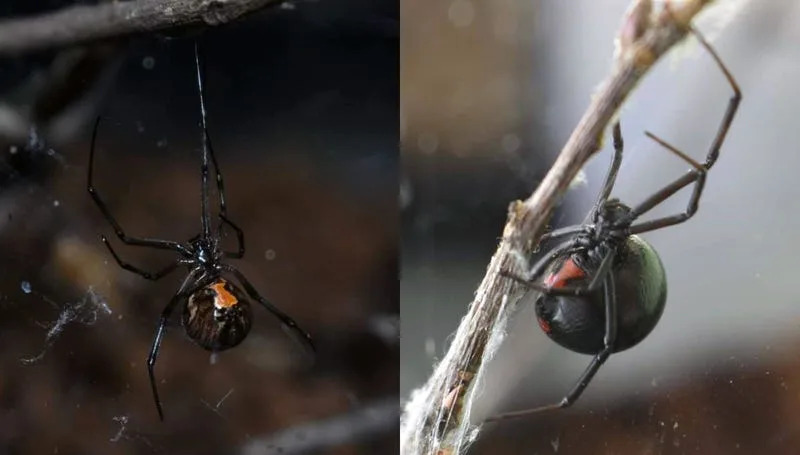ARACHNOPHILIA
Black Widow Spiders Are Getting Slaughtered by Aggressive Brown Widows
Isaac SchultzMon, March 13, 2023

Adult female brown (left) and black (right) widow spiders.
The former may be displacing the latter.
Black widow spiders across the southern United States are getting eaten up by brown widows, their lesser-known cousins, according to new research investigating the relationship between the two arachnids.
Three species of black widow are native to the United States; brown widows are believed to be native to Africa but are now present on all continents but Antarctica.
Black widow spiders across the southern United States are getting eaten up by brown widows, their lesser-known cousins, according to new research investigating the relationship between the two arachnids.
Three species of black widow are native to the United States; brown widows are believed to be native to Africa but are now present on all continents but Antarctica.
While black widows are a shy spider species—only getting aggressive when they are pinched or pressed—brown widows seek out black widows to bite. Bit(e) by bit(e), in a pattern first noticed a decade ago, the black widow spiders are being displaced by the interlopers. The team’s research is published today in the Annals of the Entomological Society of America.
Widow spiders have a bad rap for their venomous bites, which can be very painful to humans but rarely cause death. The species like to weave their haphazard cobwebs in urban and suburban environments (think garden sheds or under the sink), putting them in regular proximity to humankind.
“Brown widows are not labeled invasive. They’re still non-native,” said study lead author Louis Coticchio, a spider biologist specializing in the widow and recluse families, in a phone call with Gizmodo. “If it does come out that the introduction of brown widows is absolutely the main reason why we’re seeing a huge decline in black widow populations, I would love to see the attitude towards them changed.”
In 2018, researchers found that northern black widows (Latrodectus variolus) were expanding their range northward; in the west and south, it appears their world is shrinking due to the aggressive incursions by the brown spiders.
The team’s study involved three parts. First, they modeled the survivability of black and brown widows based on risk factors, and found that both spiders were more likely to be predated than starve. In other words, limited access to food wasn’t a reason for the shifting habitats of the two spiders.
Comparing the fecundity (amount of reproduction) and growth rates among the spiders also revealed some important takeaways: the brown widows reached reproductive maturity sooner and produced more egg sacs than black widows.
But this is where things get really interesting. When subadult spiders were put in proximity of one another, the brown widows killed and ate the black widows in 80% of encounters. When adults were put together, black widows were killed in 40% of trials, while they killed brown widows in self-defense in 30% of in counters. In the other 30% of trials, the spiders cohabitated.
In no trials did black widows take aggressive actions against the brown widows. The spiders sense each other using innervated hairs on their body and legs. When the brown widows “got a whiff” of the black widows, Coticchio said, it would send them into “aggression mode” in a way the presence of other spider species would not.
Coticchio added that more studies needed to be done to determine exactly how much of the black widow’s decline could be chalked up to brown widows’ aggressive presence. But the tentative theory has legs—eight of them, to be exact—and more research could well confirm the lab-based findings.
More: Black Widow Spiders Are Spreading Farther North Than Ever Before
Gizmodo
No comments:
Post a Comment